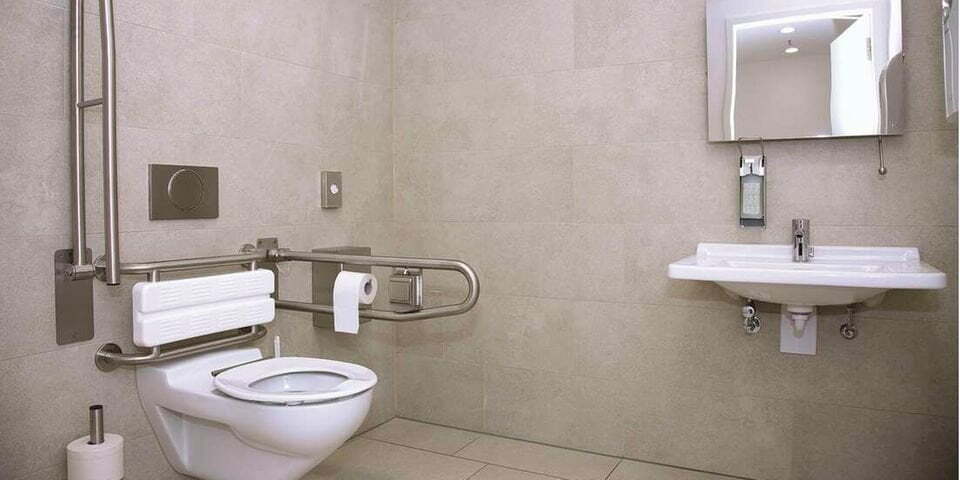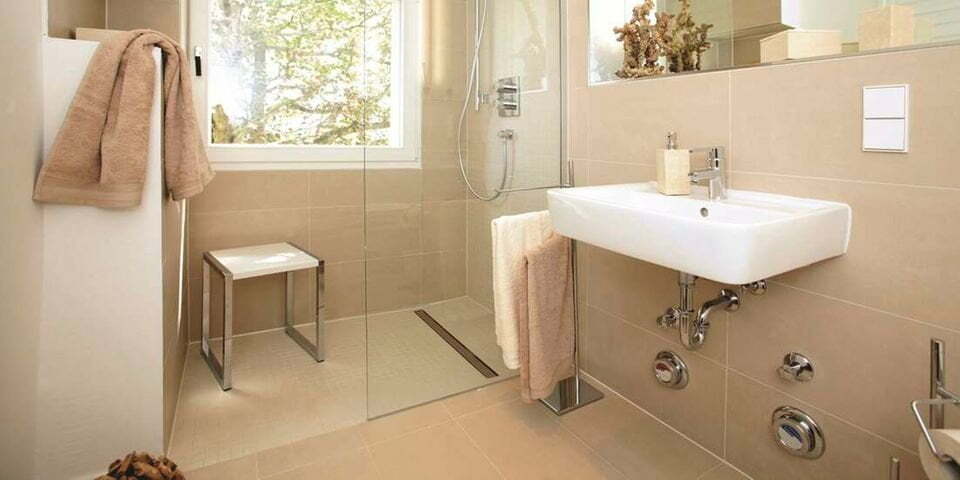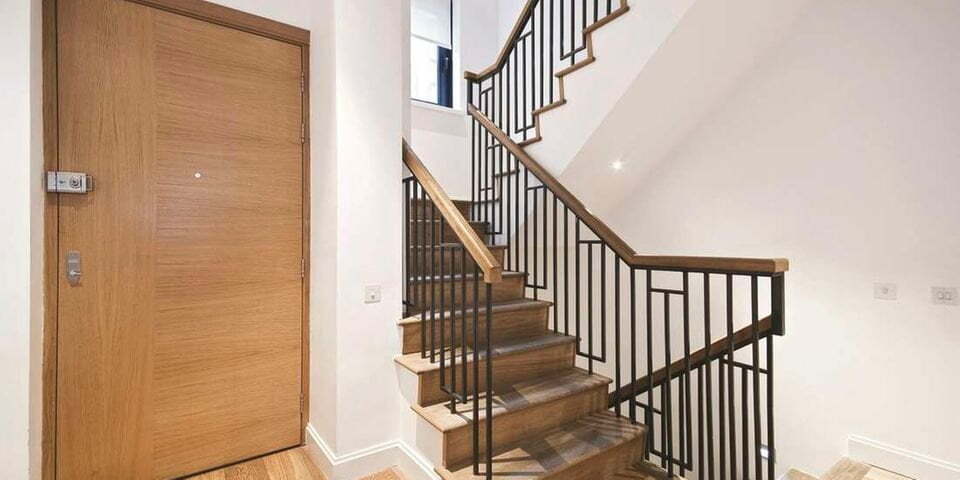Building a home that is accessible to all
When Dismus Ng’endo, a Nairobi based entrepreneur, begun to build a family home in Nakuru County, he had it all figured out. An ensuite master bedroom for him and his wife on the first floor, a children’s room across the hallway and a small guest bedroom on the ground floor.
That was in November 2015. Eight months later, he was involved in a car accident that confined him to a wheelchair.
“I could not access the first floor of our home or move around the house with my wheelchair. We had to go back to the drawing board, redesign and bring down some walls, which cost me a lot of money since the house was near completion,” he says.
According to data from the Kenya National Bureau of Statistics, people with disabilities make up a significant component of Kenya’s population —2.2 percent of the population (0.9 million people) over the age of five live with some form of disability, mobility disability being the most common. There are more than 280,000 persons with disabilities registered with physical disabilities at the National Council for Persons with Disabilities, NCPWD.
While some are born with physical disabilities, a majority acquire them through unfortunate events such as accidents.
“The concept of building a house that is usable and accessible to everyone regardless of their physical condition is called Universal Design. Such homes are built with unforeseen future eventualities in mind,” says Kelvin Mwendani, a Nairobi based architect.
Depending on the materials used, he says, their source and design of the house, it might not necessarily be more expensive to build a universal design house than the houses we are accustomed.
According to data from the Kenya National Bureau of Statistics, people with disabilities make up a significant component of Kenya’s population —2.2 percent of the population (0.9 million people) over the age of five live with some form of disability, mobility disability being the most common. There are more than 280,000 persons with disabilities registered with physical disabilities at the National Council for Persons with Disabilities, NCPWD.
While some are born with physical disabilities, a majority acquire them through unfortunate events such as accidents.
“The concept of building a house that is usable and accessible to everyone regardless of their physical condition is called Universal Design. Such homes are built with unforeseen future eventualities in mind,” says Kelvin Mwendani, a Nairobi based architect.
Depending on the materials used, he says, their source and design of the house, it might not necessarily be more expensive to build a universal design house than the houses we are accustomed.

“The beauty of a handicap accessible home is that the features benefit even those without mobility issues. For instance, you can move a baby stroller around freely, such as design also offers safety and comfort,” says Mwendani.
When it comes to building or renovating your home to accommodate those with a disability, Dennis Nyariki, a service officer at NCPWD, says that one needs to factor in several ideas.
“We are all susceptible to physical disabilities, therefore, it is important to put into consideration that someday, you might be too old and frail to climb up the stairs or reach for items in top cabinets,” he says.
Pathways
The pathway should be designed and constructed in a way that enables all people to approach, enter and exit the house easily.
It should have sufficient width and one should ensure that it is obstacle free with no protruding objects. It should also be ramped with appropriately designed kerbs, tactile surfaces and handrails to prevent falling.
For easy movement of people in a wheelchair, the surfaces should be firm, even and slip resistant.
Parking
Nyariki adds that the parking space should be wide enough for car doors to fully open to allow an individual with disability to transfer to a wheelchair.
“The recommended minimum width of such a parking space is 3800mm,” he says.
The surface of parking should be firm, level ground with no variation of surface exceeding 5mm between paving and surface features. Besides being convenient to persons with disabilities, spacious parking allows you to easily help the elderly or patients in and out of the car.
Entrance door and knobs
For minimum unobstructed movement, the width should not be less than 800mm, though 850mm or more is recommended, as more space can be required for a person using a powered wheelchair.
In front of the door opening into the house, it is important that there is enough manoeuvring space of not less than 600 mm. This is between the leading edge of a door and a wall that is perpendicular to the doorway. This space is necessary to allow opening of the door by a wheelchair or a walking frame user.
Further, the minimum clear height of a doorway should not be less than 2000mm.
Door furniture and handles
Door locks, handles, bells and other devices for gaining entry into the house should be easy to locate, identify, reach and use, and should be operable with only one hand. They should also be mounted at a position that permits easy manoeuvring from both sitting and standing positions.
“Instead of knob handles, one should consider using level handles. This is because they are easy to use and can be easily grabbed by an individual with arthritis. A person carrying many items on their hands, or a child, can also easily use their elbows to open the door. Adequate clear space should be available on either side of the doors to enable people in wheelchairs to access the door controls and pass through,” says Nyariki.
Spacious bathroom
Think about it, everyone loves a large bathroom. If you have children, you can easily bathe them or create storage space to store your towels and toiletries in the bathroom. As such, it should have a wide entrance and a spacious floor. The door of the bathroom should open outwards. If it opens inwards, there should be a way to open the door, or remove it, from the outside and there should be no openings under or above the door.

On taps and fittings, Nyariki says that standard twist action taps are easy to use and control the flow of water easily. “Where available, a ‘hospital tap’ with a long lever is recommended, as it is easy to operate with almost any body part. Instead of a bathtub, you can consider installing a step-in shower,” he says.
Glass windows
Windows are primarily incorporated into buildings for enjoying the outdoor view, providing indoor ventilation and to let daylight into rooms. The placement and design of windows will determine how satisfactory the daylight conditions will be in each room. Also, the location and relative height of windows is also important so that wheelchair users can look out of, and open windows.
Windows should be easy to open and close by all, opened and closed with one hand and shutters designed in such a way that they can always be fastened securely.
Workable kitchen worktops
Kitchens, including appliances and fittings such as sinks, should be designed to enable use by all, including those with mobility impairments. Also, there should be sufficient space for everyone to move while the floors should be slip resistant.
“Essential kitchen appliances should be usable by people either standing or sitting in a wheelchair while a worktop should be located beside all appliances. The sink taps should be reachable and easy to operate with one hand. It is recommended to provide adequate space under the sink guided by the user’s needs or to provide good space beside the sink. If a knee recess is provided under a sink, its underside should be insulated,” he offers.
Further, all cupboards, cabinets and pantries should be designed to be accessible to persons using mobility aids such as wheelchairs and the kitchen work surface shall be at a maximum height of 865 mm above the finish floor or ground. Where microwave ovens are installed, they should be located at counter height with a clear level area of counter in front, allowing easy transfer of food items.
Create low storage spaces
Most of your storage should be accessible, says Nyariki. “In the case of cabinets, you can store things that you don’t need regularly in the upper cabinets. This is especially important when considering renovating your closet to be accessible. Move down your hanging clothes and add many lower drawers and shelves for easy access to all items.
Slip resistant floor tiles:
An accidental slip can be dangerous to any individual. For persons with disabilities, it is not only dangerous but also troublesome navigating around glossy tiles. For bathrooms in particular, a skid- proof or slip-resistant floor is the most suitable for floor tiles.
Stairs with hand rails:
Rails should extend beyond the first and last step of the staircase. Hand rails on the stairs are there for everybody’s safety. They are helpful for small children, older people or someone unable to use their legs.

Extension of the hand rails beyond the steps allows a visually impaired person to avoid tripping on the steps. It also helps elderly people to securely climb the stairs. They should be floor level at the entrance.
Shelves in rooms and kitchens should be of adjustable height or pull-out style
Shelves of adjustable height allow people with varied heights to open and close them without needing help. Wheelchair users or people with dwarfism would also find such adjustable shelves very useful.
Corridor
The main horizontal circulation design should be level on each floor without steps to ensure that the building is accessible to all people. To accommodate people with visual impairments, routes should have detectable delimitations and different visual contrast from the surroundings.
“The space required for a wheelchair to make a 180 degree turn should be not less than 2000 mm in the direction of travel and not less than 1500 mm wide.
Two-way-switch: One at the entrance of door and one at the bedside is always better than one-way-switch
Two-way-switches are the way to go. You can use the switch at the entrance door to light-up the room, walk to your bed and switch off the lights without getting up. Sick people won’t need to call anyone to switch off the light nor will someone on crutches be afraid of tripping and falling in the darkness.
Arranging your furniture
Once you are done building and are ready to move in, consider the layout of your furniture. It should not obscure passageways or turns. Also, make daily use items such as chairs, bookshelves and utensils easy to access. This may mean moving these regular use items to lower shelves for those using mobility devices.
Credit: Source link